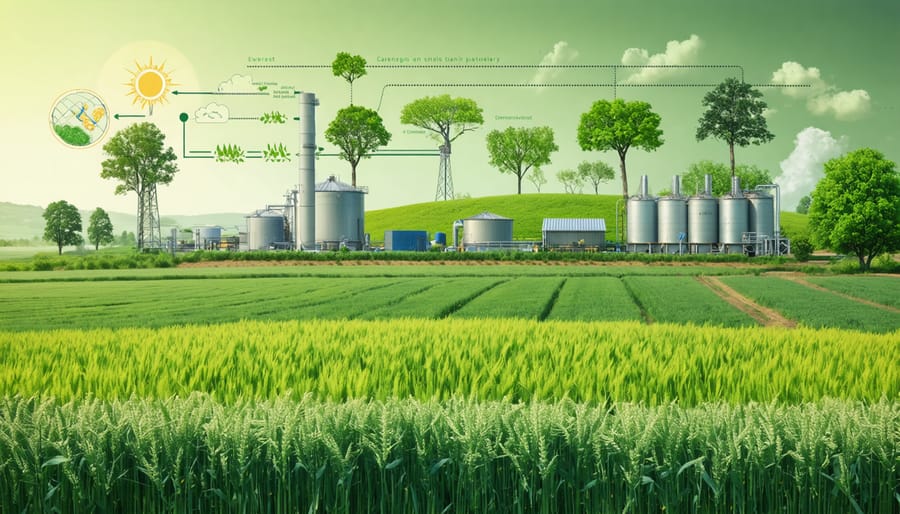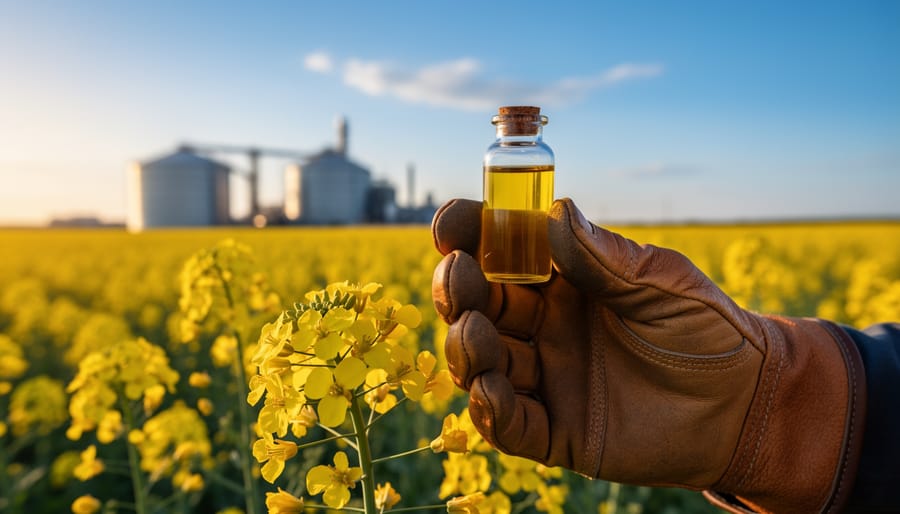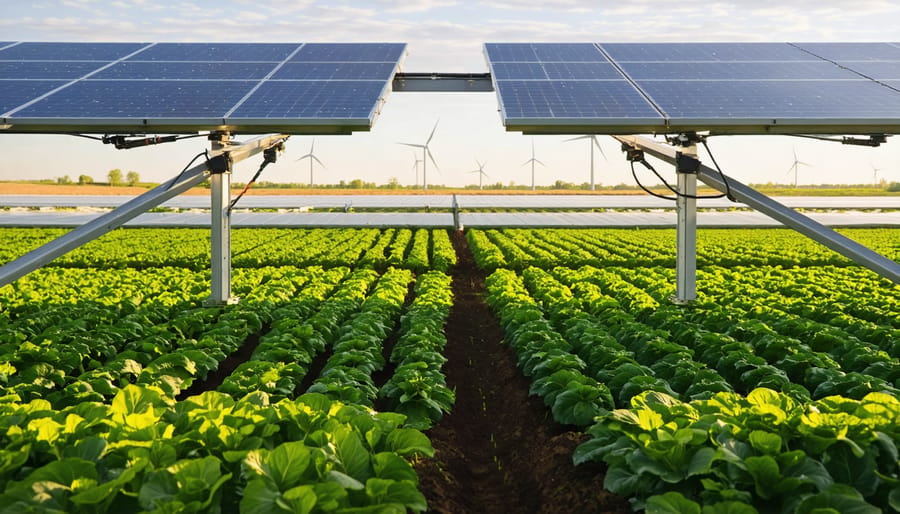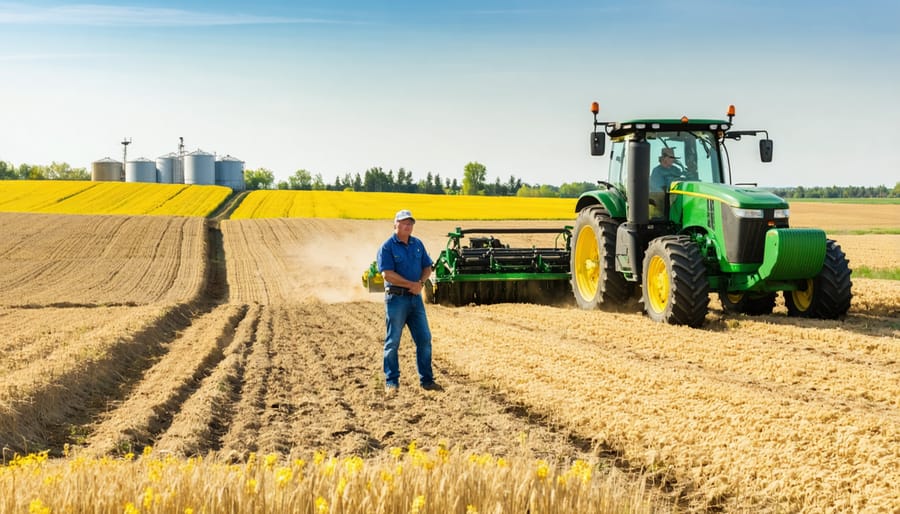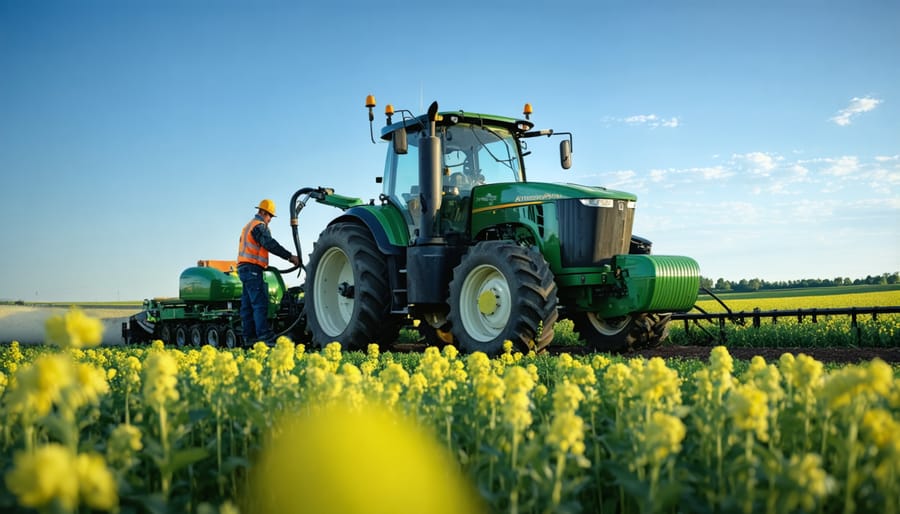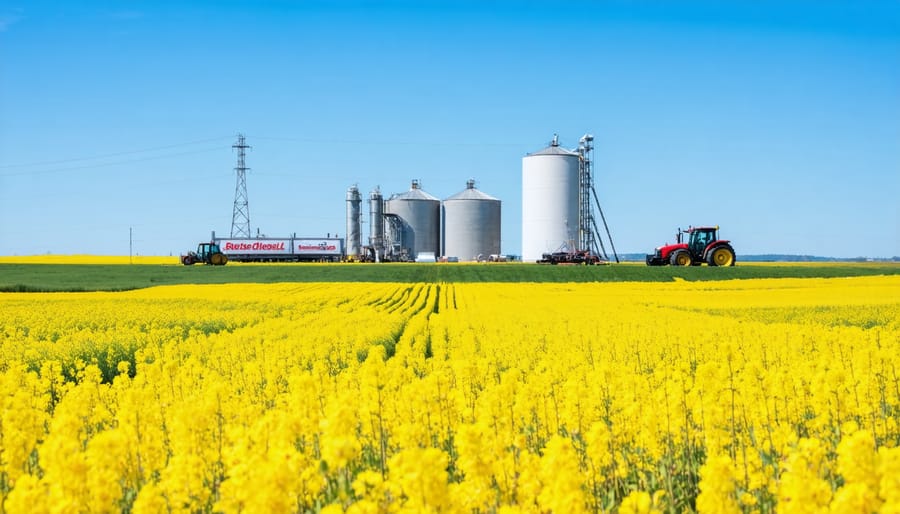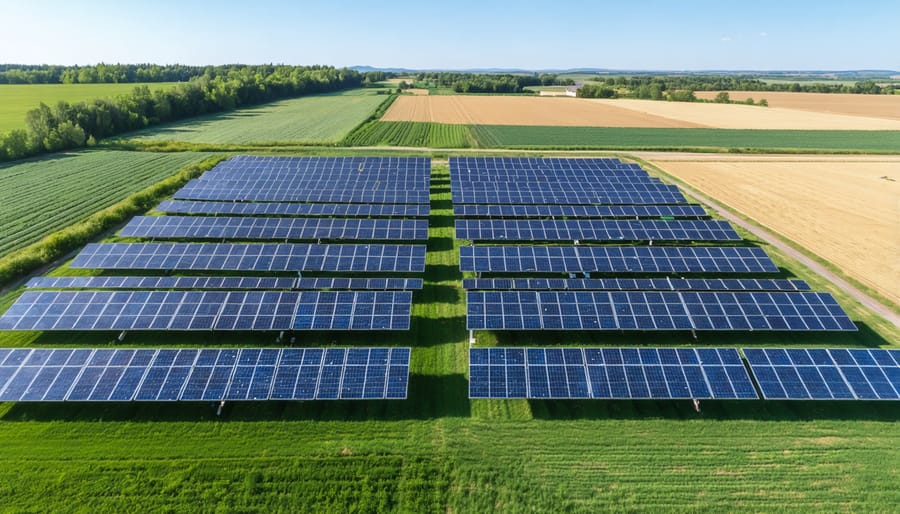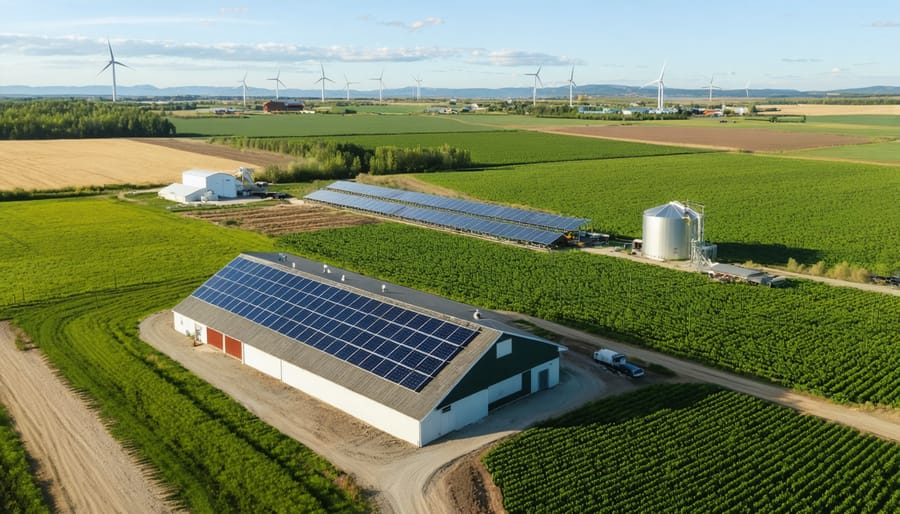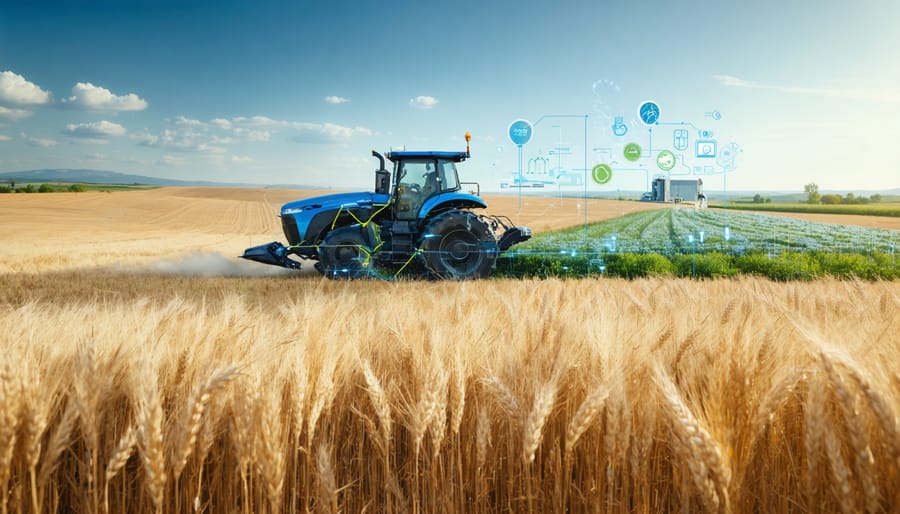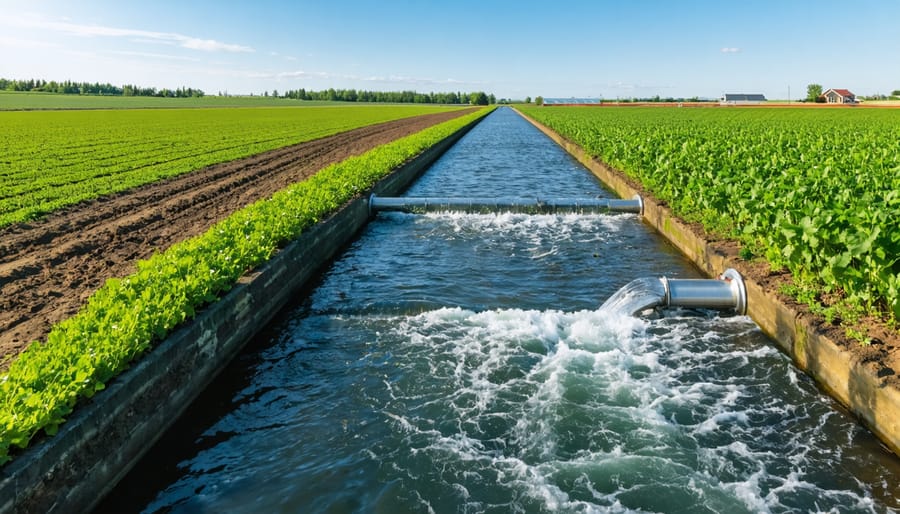As Alberta farmers face mounting energy costs and increasing pressure to adopt sustainable practices, bioenergy emerges as a compelling solution that transforms agricultural waste into valuable renewable energy. The question of whether bioenergy truly qualifies as renewable strikes at the heart of farm sustainability and economic viability. Unlike fossil fuels that deplete finite resources, bioenergy harnesses the natural carbon cycle through agricultural residues, purpose-grown crops, and organic waste materials that regenerate season after season. On a practical level, this means the corn stalks left after harvest, manure from livestock operations, and even food processing waste can power farms while reducing environmental impact. For Canadian agricultural operations seeking energy independence and improved sustainability, understanding bioenergy’s renewable status isn’t just an academic exercise—it’s a pathway to operational resilience and environmental stewardship that aligns with both traditional farming values and modern sustainability demands. This natural synergy between agriculture and renewable energy production offers a uniquely Canadian solution to our energy and environmental challenges.
What Makes Energy Sources Truly Renewable?
The Carbon Cycle in Agriculture
Agricultural biomass follows nature’s own carbon recycling system, making it fundamentally different from fossil fuels. When crops grow, they absorb carbon dioxide from the atmosphere through photosynthesis, storing it in their stems, leaves, and other plant materials. When we use these materials for bioenergy, the carbon returns to the atmosphere, only to be captured again by next season’s crops.
Here in Alberta, our wheat fields and canola crops are perfect examples of this cycle in action. During their growing season, these crops pull in substantial amounts of CO2, and when we use their residues for bioenergy, we’re simply completing the natural cycle that started in our fields. This process typically takes one growing season – about 4-6 months for most of our annual crops.
Unlike fossil fuels, which release carbon that’s been locked away for millions of years, agricultural biomass only releases what it recently captured. This quick turnover is what makes farm-based bioenergy a carbon-neutral option when managed properly. For Alberta farmers, this means the straw and chaff left after harvest can create energy while maintaining this natural balance.
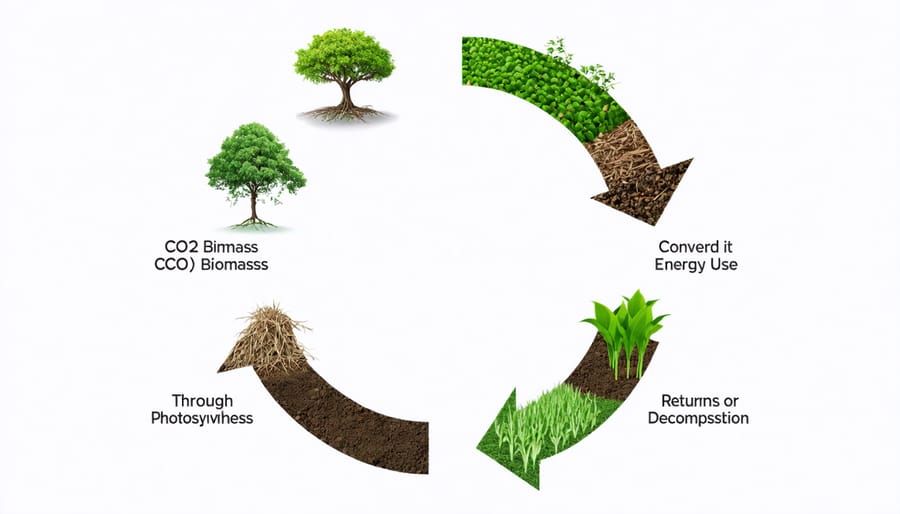
Renewable vs. Sustainable: Important Distinctions
While many people use “renewable” and “sustainable” interchangeably when discussing farm energy, there’s an important distinction we need to understand. Renewable energy sources naturally replenish themselves over a relatively short time frame – think months or years, not centuries like fossil fuels. However, just because something is renewable doesn’t automatically make it sustainable.
Here in Alberta, we’re seeing more farmers adopt sustainable farm solutions that consider both aspects. For example, corn grown specifically for biofuel is renewable since we can replant it annually, but it might not be sustainable if it competes with food production or requires excessive resources to grow.
What makes bioenergy truly sustainable is when it comes from agricultural waste or byproducts that would otherwise go unused. Think of straw left after harvest or manure from livestock operations – these materials are both renewable and sustainable because they’re natural byproducts of existing farm operations, requiring no additional land or resources to produce.
Understanding this difference helps us make better choices about which bioenergy solutions to implement on our farms.
Agricultural Waste as a Bioenergy Source
Common Alberta Farm Waste Streams
Alberta farms generate several valuable waste streams that can be converted into renewable bioenergy. Crop residues, particularly from wheat, barley, and canola operations, make up the largest portion of available biomass. After harvest, these farms typically produce 2-4 tonnes of straw per hectare, which can be collected and processed for energy production.
Livestock operations contribute significant organic waste materials, with cattle feedlots being major sources. A typical 10,000-head feedlot produces approximately 62,000 tonnes of manure annually, offering substantial potential for biogas production through anaerobic digestion.
Poultry farms generate about 150,000 tonnes of litter province-wide each year, which can be used directly as a fuel source or processed into biogas. Similarly, hog operations produce liquid manure that’s well-suited for biogas production.
Food processing waste from potato, sugar beet, and dairy operations presents another opportunity. These facilities generate organic by-products that can be converted to biogas or other forms of bioenergy. For example, a medium-sized potato processing facility can produce up to 50 tonnes of organic waste daily.
Forestry residues from woodlot management and shelterbelts provide woody biomass suitable for direct combustion or pelletization. Even dedicated energy crops like hemp and switchgrass, grown between regular crop rotations, can supplement these waste streams for bioenergy production.
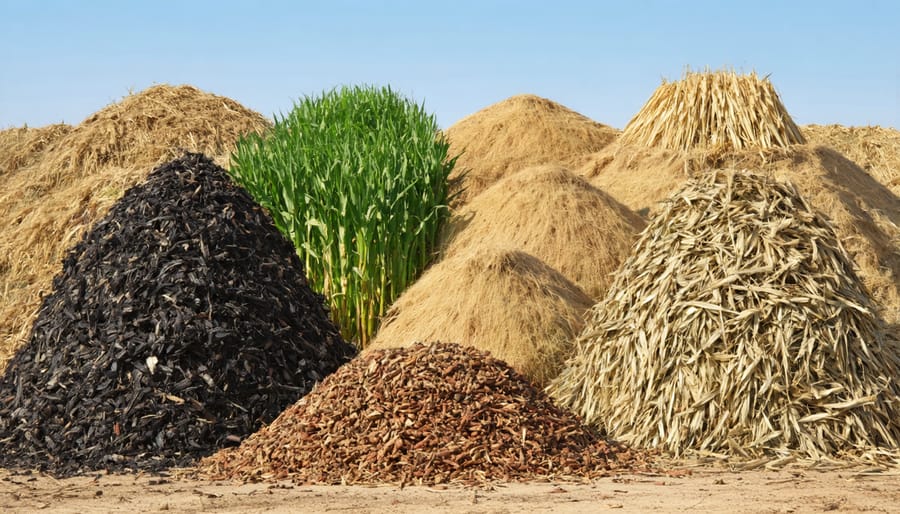
Energy Potential in Farm Waste
Agricultural waste holds remarkable energy potential that many Alberta farmers are already tapping into. On a typical grain farm, crop residues can generate between 2-4 gigajoules of energy per tonne, offering a significant opportunity to improve farm energy efficiency while managing waste sustainably.
Different types of farm waste yield varying amounts of energy. For instance, corn stover can produce approximately 17.5 GJ per hectare, while wheat straw yields about 15.2 GJ per hectare. Manure from a 200-head dairy operation can generate enough biogas to power 50-70 households annually through anaerobic digestion.
Here in Alberta, many producers are discovering that canola residue offers particularly promising returns, with potential energy yields of 19.8 GJ per hectare. This is especially relevant considering our province’s position as Canada’s largest canola producer.
The energy potential isn’t limited to crop residues. Wood waste from shelterbelts and orchards can generate 18-20 GJ per tonne when properly dried and processed. Even food processing waste, like potato peelings or sugar beet pulp, can yield 3-5 GJ per tonne through anaerobic digestion.
By understanding these energy values, farmers can make informed decisions about implementing bioenergy systems that best suit their operations and available waste streams.
The Renewable Cycle of Bioenergy
Crop Rotation and Biomass Regeneration
Effective crop rotation is the cornerstone of sustainable biomass production for bioenergy. By implementing regenerative farming practices, Alberta farmers can maintain a continuous supply of biomass while improving soil health and biodiversity.
A well-planned rotation typically involves alternating between high-residue crops like wheat or corn with nitrogen-fixing crops such as legumes. This approach ensures that approximately 4-6 tonnes of biomass per hectare remains available for bioenergy production while maintaining soil fertility. For example, many successful Alberta farms follow a four-year rotation: canola, wheat, pulses, and barley.
The key to sustainable biomass regeneration lies in timing. Harvest residue collection should leave about 30% of organic matter on the field to protect soil structure and nutrient cycles. Modern farming equipment can precisely manage this balance, allowing farmers to collect biomass for energy while maintaining field productivity.
Cover crops planted during shoulder seasons provide additional biomass while protecting soil from erosion. Winter rye and fall-seeded crops are particularly effective in our climate, offering both soil protection and potential bioenergy feedstock.
By following these practices, farms can sustainably produce biomass year after year while improving their soil’s productive capacity.
Soil Health and Sustainability
When harvesting biomass for bioenergy production, maintaining soil health is crucial for long-term sustainability. Alberta farmers have found success by implementing a balanced approach that allows for both energy production and soil conservation. The key is to leave adequate crop residue in the fields – typically 30-40% of total biomass – to protect against erosion and maintain organic matter levels.
Crop rotation plays a vital role in this balance. For example, alternating between wheat and legumes helps naturally replenish soil nitrogen while providing different types of biomass for energy production. Many Alberta farmers also incorporate cover crops during shoulder seasons, which protect the soil and can be partially harvested for bioenergy use.
Modern harvesting techniques, such as selective residue collection, help ensure that essential nutrients remain in the field. Farmers can monitor soil organic matter levels through regular testing and adjust their biomass collection accordingly. Some operations are successfully using precision agriculture tools to map and manage their fields, identifying areas where biomass can be sustainably harvested versus areas that need additional organic matter.
Composting and returning biochar – a byproduct of some bioenergy processes – to the soil has shown promising results in maintaining soil fertility while supporting renewable energy production. This creates a circular system where energy production actually contributes to soil health improvement.
Real Results: Alberta Farmers Leading the Way
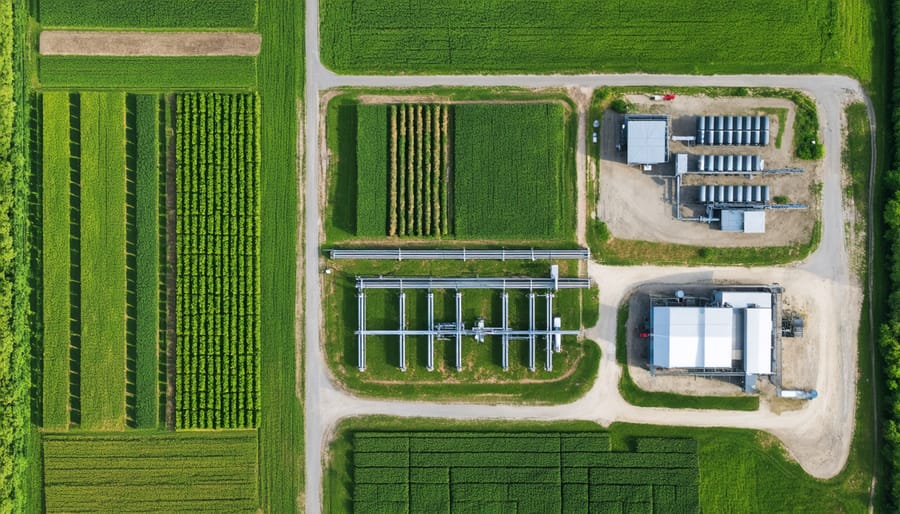
Success Story: The Thompson Family Farm
Located just outside of Lethbridge, Alberta, the Thompson Family Farm stands as a shining example of successful bioenergy adoption in Canadian agriculture. Third-generation farmers Jim and Sarah Thompson transformed their 800-hectare grain operation into a model of sustainable farming by implementing an innovative bioenergy system in 2018.
The Thompsons initially faced challenges common to many Alberta farmers: rising energy costs and increasing pressure to manage crop residues sustainably. Their solution was to install a biomass conversion system that processes wheat straw and corn stalks into bioenergy, powering their grain drying operations and heating their greenhouse facilities.
“We used to spend about $45,000 annually on natural gas,” explains Jim Thompson. “Now we’re generating 75% of our energy needs from materials that would have otherwise been waste.” The system processes approximately 400 tonnes of agricultural residue annually, generating enough energy to dry grain and heat 2,000 square metres of greenhouse space.
The initial investment of $280,000 was offset by provincial grants and achieved payback within four years. Beyond the financial benefits, the Thompsons report improved soil health from returning biochar to their fields and reduced carbon emissions by approximately 120 tonnes annually.
Their success has inspired neighboring farms to explore bioenergy solutions, with the Thompsons hosting regular farm tours and mentoring other agricultural families through the transition process.
Economic and Environmental Benefits
Alberta farmers implementing bioenergy systems are experiencing significant cost reductions while contributing to environmental sustainability. For example, the Henderson Family Farm in Red Deer County reduced their annual energy costs by 45% after installing a biomass heating system that processes crop residues and agricultural waste. Their renewable energy investment paid for itself within four years.
Environmental benefits are equally impressive. The Lethbridge Biogas facility, processing agricultural waste from local farms, prevents approximately 224,000 tonnes of greenhouse gas emissions annually – equivalent to removing 48,000 cars from the road. Additionally, the nutrient-rich by-products from biogas production serve as organic fertilizers, reducing chemical fertilizer dependency by up to 30% on participating farms.
The economic advantages extend beyond individual operations. Communities hosting bioenergy projects report increased job creation, with an average of 12 new permanent positions per facility. Local contractors and equipment suppliers also benefit from regular maintenance and component replacement work.
Water conservation is another key benefit, as bioenergy systems typically require 60% less water compared to conventional power generation. Farmers using biogas digesters report improved soil health and reduced odour complaints from neighbouring properties, contributing to better community relations and land stewardship.
Bioenergy stands as a truly renewable resource within our agricultural landscape, offering Alberta farmers a sustainable way to transform agricultural waste into valuable energy. Through proper management of biomass resources and responsible farming practices, we can maintain a continuous cycle of energy production that benefits both our farms and the environment.
The renewable nature of bioenergy is evident in its basic principle: we grow crops, use the primary harvest for food production, and convert the remaining organic matter into energy. This cycle repeats with each growing season, making it inherently sustainable when managed properly. For Alberta farmers, this means turning what was once considered waste into a valuable resource while contributing to Canada’s clean energy goals.
As we’ve seen from successful implementations across the province, bioenergy systems integrate seamlessly with existing agricultural operations, creating additional revenue streams while reducing waste. By embracing bioenergy, we’re not just choosing a renewable energy source – we’re investing in the future of sustainable agriculture, supporting local energy independence, and strengthening our farming communities for generations to come. Together, we can harness this renewable resource to build a more resilient and sustainable agricultural sector.

